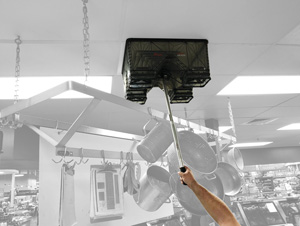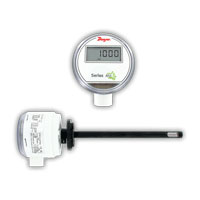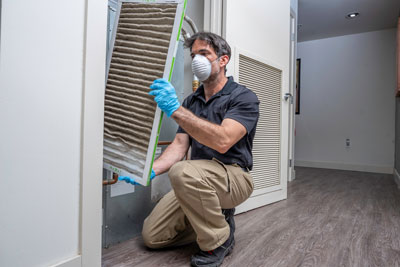 While many measures such as vaccines, boosters, more effective masking and rapid testing have been effectively implemented across the world against COVID-19, ventilation and filtration have remained insufficiently addressed. In a new report provided by the Lancet COVID-19 Commission Task Force experts have identified “four key actions that represent the most effective, fundamental steps toward promoting healthier indoor environments and reducing the risk of airborne infectious disease transmission indoor.1” The four strategies are:
While many measures such as vaccines, boosters, more effective masking and rapid testing have been effectively implemented across the world against COVID-19, ventilation and filtration have remained insufficiently addressed. In a new report provided by the Lancet COVID-19 Commission Task Force experts have identified “four key actions that represent the most effective, fundamental steps toward promoting healthier indoor environments and reducing the risk of airborne infectious disease transmission indoor.1” The four strategies are:
1. Commission or Recommission Building Systems

Commissioning and recommissioning building systems is the practice of verifying that the building systems are operating as designed as well as helping to identify opportunities for system improvement. It is recommended a building is recommissioned at least every 3-5 years. To best identify your HVAC system’s operation, we recommend the accurate and predictive balancing of the Series SAH SMART Air Hood® balancing instrument for correcting imbalanced airflow, the Series 477AV handheld digital manometer for pressure, flow, and velocity measurements, and the Series 160 stainless steel pitot tubes to monitor or control air velocity or air flow. Additionally, the NIST options for these products and others ensure accurate servicing as it is crucial to stable and accurate measurements that lead to cost savings, energy savings, improved occupant thermal comfort, improved indoor air quality, and extended equipment life.
2. Maximize Outdoor Air

Unfortunately, current minimum ventilation rate standards are not sufficient and higher ventilation rates of 10 L/s per person and 4-6 air changes per hour have been proposed to reduce the risk of airborne infectious disease transmission indoors2. With the increased need for outdoor air, it’s imperative that sensors are used to help measure outdoor air intake to help improve system performance or signal the need for maintenance. Should outside air dampers be stuck closed or partially closed due to blockage or malfunction, key air velocity sensors such as the Series AVUL and Series AVPT air velocity transmitters are the first line of defense that signal the air flow is disrupted. Alternatively, the Series STRA and Series FLST duct mounted airflow stations use single or multiple averaging airflow elements pre-piped into a casing that are designed to be flange connected into the ductwork for an even more accurate reading.
3. Upgrade Filters
 Adding or upgrading filters is a great way to reduce indoor concentrations of airborne particulate matter. If the system is not already equipped with a differential pressure sensor, one can be used to monitor the pressure drop and performance of new filters which helps to indicate the proper time to replace them. A good solution would be the addition of a Series 2000 Magnehelic® gage for a versatile low differential pressure gage allowing a basic pressure measurement across the filter. An even better solution would include a Series ADPS adjustable differential pressure switch to know exactly when the filter requires changing or maintenance is required. The best solution would be the Series MSX Magnesense® differential pressure transmitter to help you monitor differential pressure in real time to plan maintenance and prevent downtime.
Adding or upgrading filters is a great way to reduce indoor concentrations of airborne particulate matter. If the system is not already equipped with a differential pressure sensor, one can be used to monitor the pressure drop and performance of new filters which helps to indicate the proper time to replace them. A good solution would be the addition of a Series 2000 Magnehelic® gage for a versatile low differential pressure gage allowing a basic pressure measurement across the filter. An even better solution would include a Series ADPS adjustable differential pressure switch to know exactly when the filter requires changing or maintenance is required. The best solution would be the Series MSX Magnesense® differential pressure transmitter to help you monitor differential pressure in real time to plan maintenance and prevent downtime.
4. Supplement with Portable Air Cleaners where Needed
Supplementing spaces with portable air filtration systems that reduce in-room concentrations of airborne particles may be advantageous where other ventilation and filtration modifications are impossible or additional reassurance about air quality would ease building occupants’ concerns. They can positively impact cognitive, respiratory, and cardiovascular health by reducing harmful indoor air particulates where more effective control is not possible.
—
1. Jones, Emily R., Rainbolt, Marissa V., Marr, Linsey C., Michaels, David, Cadet, Leslie R., Miller, Shelly L., Levinson, Meira, Morawska, Lidia, Corsi, Richard L., Pollock, Nira R., Li, Yuguo, Munro, Alasdair P. S., Grier, Kelly, Chen, Qingyan., Macomber, John D., Cao, Xiaodong, Allen, Joseph G. The First Four Healthy Building Strategies Every Building Should Pursue to Reduce Risk from COVID-19. Lancet COVID-19 Commission Task Force on Safe School, Safe Work, Safe Travel. 2022. https://covid19commission.org/safe-work-travel
2. Allen JG, Ibrahim AM. Indoor Air Changes and Potential Implications for SARS-CoV-2 Transmission. JAMA – J Am Med Assoc. 2021;325(20):2112-2113. doi:10.1001/jama.2021.5053
